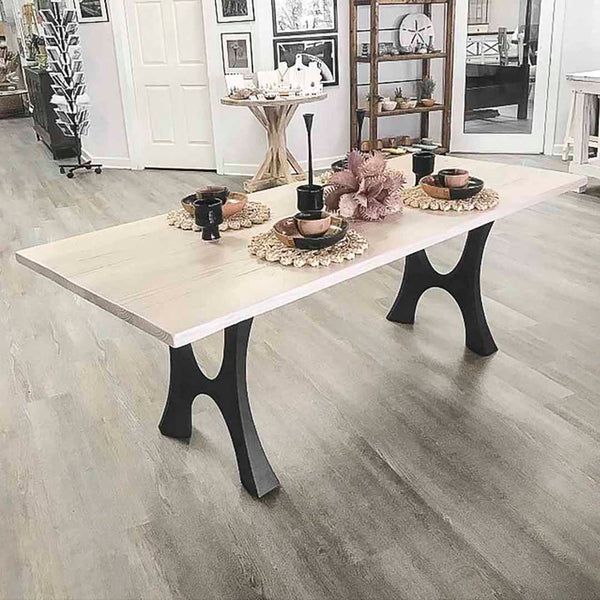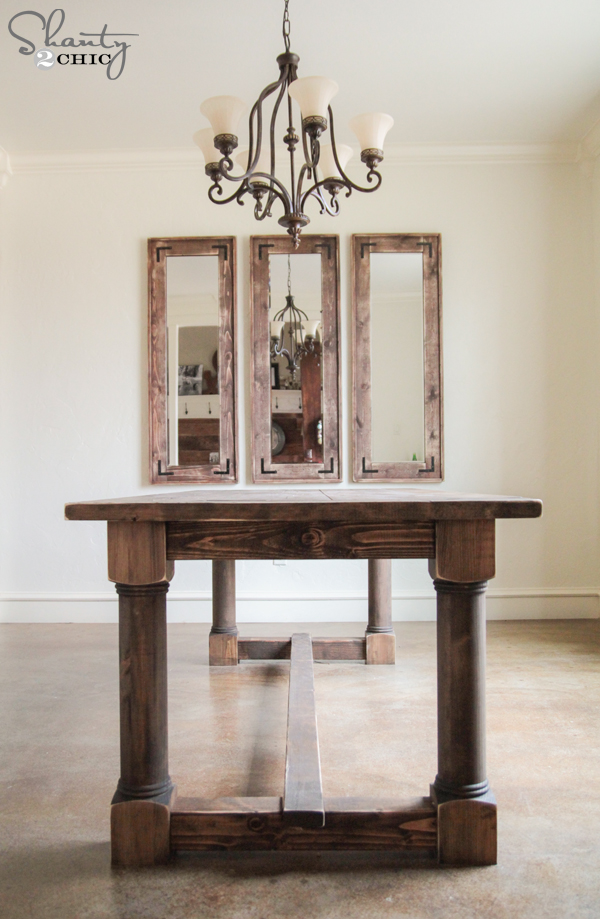How to Choose the Perfect Dining Room Table Legs for Your Home
How to Choose the Perfect Dining Room Table Legs for Your Home
Blog Article
From Standard to Modern: Locate the Ideal Dining Room Table Legs for Your Design
While traditional styles such as cabriole and turned legs evoke a feeling of classic refinement, modern designs like barrette and geometric choices provide a chance for striking aesthetic passion. As you take into consideration these components, the question stays: how can you flawlessly incorporate these varied leg styles to create a harmonious eating experience?
Comprehending Table Leg Styles
The variety of dining room table leg designs can substantially affect both the aesthetic appeals and capability of the space. Each leg style contributes special visual aspects and functional functions, dealing with diverse layout choices and use needs. Recognizing these designs is critical for selecting the appropriate eating table that aligns with your total indoor design vision.
For circumstances, tapered legs offer a tidy, timeless appearance that can boost a space's beauty, while stand bases supply stability and take full advantage of legroom, making them suitable for smaller rooms. Hairpin legs, a hallmark of mid-century modern-day design, introduce a commercial flair, enabling an airy, open feeling. Trestle legs stimulate rustic beauty, providing durable assistance and a feeling of timelessness.
Wood legs can bring warmth and texture, whereas steel options frequently communicate a smooth, modern ambiance. Inevitably, understanding table leg styles is necessary for creating a cohesive eating location that shows personal style while making certain functionality and convenience.
Conventional Table Leg Options
When selecting dining area table legs, typical options typically symbolize ageless style and craftsmanship. These styles show a rich heritage and a commitment to top quality, making them ideal for those that value classic visual appeals.
One of one of the most famous traditional leg styles is the cabriole leg, characterized by its graceful curved form. This style usually includes attractive makings and is most typically located in Queen Anne and Chippendale furnishings. Another prominent choice is the turned leg, which flaunts a series of smooth, rounded shapes that offer a classic appearance while keeping stability.
Moreover, the straight leg, while basic, uses a unadorned and durable framework that can blend seamlessly with a selection of tabletop styles. For those drawn to ornate detailing, claw-and-ball feet legs stimulate a feeling of magnificence and can act as a spectacular centerpiece in any kind of dining room.
Finally, pedestal bases, although not purely legs, give an alternate traditional alternative that permits adequate legroom and can be wonderfully sculpted. Each of these standard leg styles adds to the total atmosphere of a dining-room, weding feature with visual allure.

Modern Table Leg Designs
Modern table leg designs supply a varied variety of styles that highlight clean lines and cutting-edge materials. These styles commonly focus on functionality while serving as striking prime focus within an eating area. Minimalist visual appeals are prevalent, with legs crafted from products such as steel, glass, and engineered wood, which add to a ventilated and contemporary feeling.
One preferred style is the barrette leg, identified by its slender, conical structure that offers security without frustrating the tabletop (dining room table legs). This style is commonly discovered in mid-century modern furnishings and can effortlessly complement numerous table shapes. An additional pattern is using geometric forms, where legs may tackle unbalanced or angular forms, adding aesthetic passion and a touch of creativity

Blending Styles for Special Rooms
Frequently, house owners seek to create one-of-a-kind eating areas that reflect their individual style by blending numerous layout aspects. This strategy permits the incorporation of diverse appearances, resulting in a harmonious yet distinctive environment. Pairing a rustic wood table with streamlined, contemporary steel legs can create an eye-catching contrast that raises the space's general charm.
In addition, integrating vintage table legs with contemporary tabletops can evoke a sense of background while preserving a contemporary sensibility. Such combinations not only display specific taste yet also encourage creative thinking, allowing homeowners to curate a space that feels both personal and welcoming.
Color plays a critical role in this mixing procedure; picking table legs that match or comparison with the existing color pattern can improve aesthetic rate of interest. Whitewashed legs can soften the daring of a dark table surface area, creating a well balanced aesthetic.
Tips for Selecting the Right Legs
Choosing the right table legs is essential for accomplishing both performance and aesthetic charm in your eating area. Begin by considering the overall design of your room. Typical settings gain from legs that include complex makings or transformed designs, while modern spaces might ask for sleek, minimalist styles.
Following, examine the elevation and stability of the legs. dining room table legs. Basic dining tables vary between 28 to 30 inches in height, so guarantee the legs match this dimension for convenience. In addition, durable products, such as wood or metal, can boost security and long life
Examine the leg form also-- choices consist of straight, tapered, or stand layouts. Straight legs offer a classic appearance, click here to read while conical legs can include a touch of style. Pedestal bases provide ample legroom and are suitable for smaller rooms.
Final Thought
In summary, picking the ideal dining-room table legs calls for mindful factor to consider of both modern-day and conventional styles. Traditional alternatives such as cabriole and transformed legs supply classic sophistication, while modern layouts like barrette and geometric shapes offer a contemporary touch. By balancing leg design, elevation, and material with the overall decoration, a natural and welcoming atmosphere can be accomplished. Ultimately, the chosen table legs need to mirror the preferred visual, improving the eating experience within the room.
The variety of eating space table leg designs can dramatically affect both the visual appeals and capability of the space. Ultimately, recognizing table leg styles is important for producing a cohesive dining location that reflects personal style while making sure usefulness and comfort.One of the most famous conventional try these out leg designs is the cabriole leg, defined by its stylish bent shape. Straight legs provide a traditional appearance, while tapered legs can add a touch of elegance.In summary, selecting the perfect eating space table legs requires cautious factor to consider of both standard and modern-day styles.
Report this page